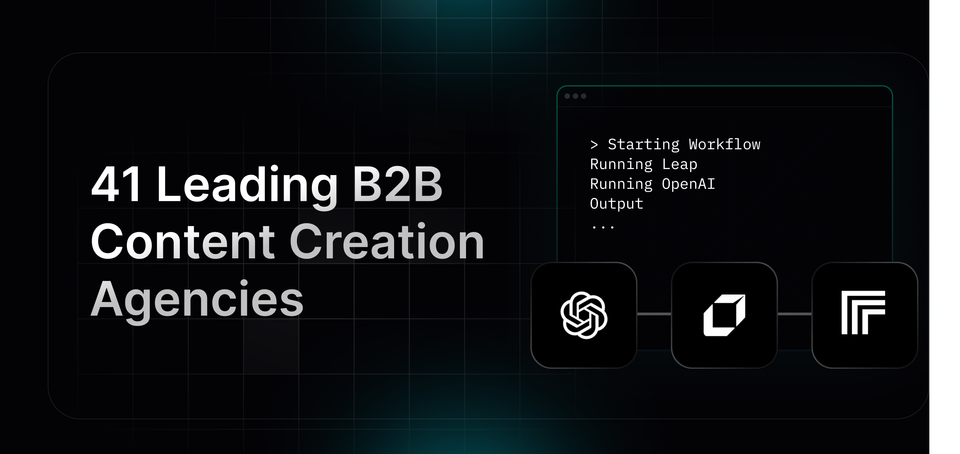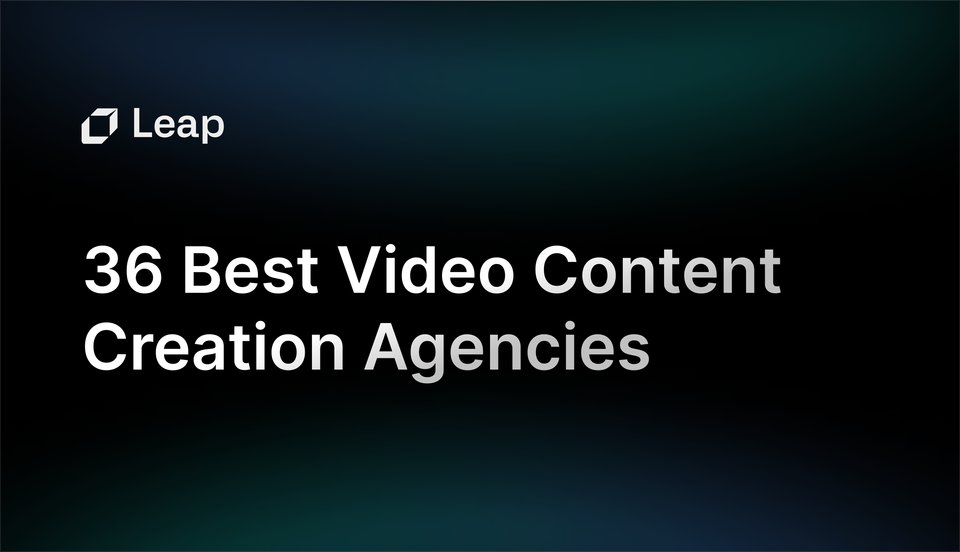How To Become World Class At Content Creation (+ Free AI Content Creation Tool)
Proper your brand forward with this holistic guide on content creation. Elevate engagement, captivate audiences, and stand out online. Unleash your creativity today!
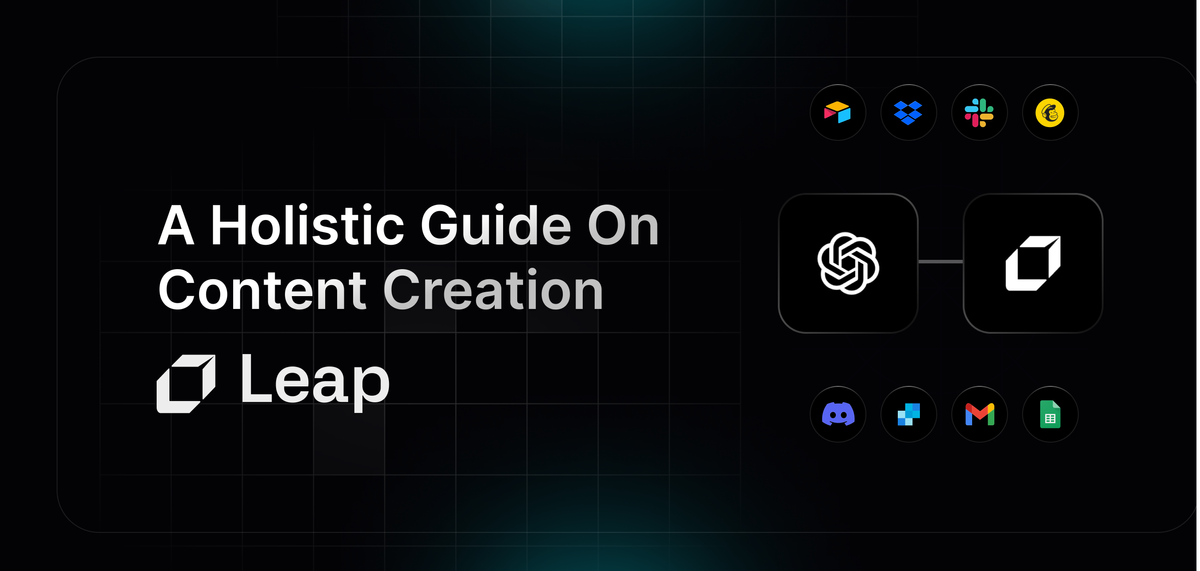
In the vast world of online communication, where information is constantly flowing, content creation has become a vital skill for individuals and businesses alike. Whether you're a blogger, a marketer, or simply someone who wants to share their thoughts with the world, the ability to create compelling and engaging content is a must. But what exactly is content creation?
It's more than just putting words on a page; it's about crafting a story that captivates and resonates with your audience. It's about finding the perfect balance between creativity and strategy, and using your unique voice to stand out in a sea of information. So, if you're ready to dive into the art of content creation, I invite you to join me on this journey of discovery, where we'll explore the ins and outs of this ever-evolving field and learn how to create content that truly shines.

What is content creation?

Content creation is the overarching process of producing valuable and relevant information, typically in the form of written, visual, or audio materials, with the goal of capturing and engaging the attention of a specific target audience. It involves the strategic planning, creation, and distribution of content across various platforms such as websites, blogs, social media, and other digital channels.
Content creation encompasses the entire journey of transforming ideas and knowledge into captivating and informative experiences for individuals seeking information or entertainment. It is a multifaceted process that requires creativity, research, and a deep understanding of the target audience's needs and preferences.
The role of content creation in digital marketing
Content creation plays a pivotal role in digital marketing strategies, as it enables businesses to establish their online presence, build brand authority, and foster meaningful connections with their target audience. By producing high-quality, relevant, and engaging content, companies can attract and retain customers, effectively communicate their brand message, and drive valuable actions, such as conversions and customer loyalty.
The importance of storytelling in content creation
Storytelling lies at the heart of content creation, as it allows brands to connect with their audience on an emotional level and create a memorable experience. Through compelling narratives and relatable characters, storytelling captivates attention, evokes emotions, and leaves a lasting impact. By infusing storytelling techniques into content creation, brands can effectively convey their brand values, mission, and unique selling propositions, fostering a sense of authenticity and trust.
Tailoring content for different platforms and formats
Content creation requires adaptability, as different platforms and formats have varying requirements and user expectations. Whether it is a blog post, social media update, podcast, or video, each format demands a distinct approach to effectively engage the target audience. Content creators must understand the nuances of each platform, optimizing their content to fit the specific context, tone, and style, while ensuring its core message remains consistent.
The role of research in content creation

Research forms the backbone of content creation, ensuring that the produced content is accurate, credible, and relevant. Thorough research enables content creators to stay up-to-date with industry trends, audience preferences, and emerging topics. By conducting in-depth research, content creators can provide insightful and authoritative information, establishing themselves as trusted sources of knowledge within their respective fields.
Engaging and interactive content creation
In an increasingly digital world, content creation should embrace interactivity and engagement. By incorporating elements such as interactive quizzes, polls, videos, and immersive experiences, content creators can enhance user participation and capture attention in a more dynamic and memorable way. Engaging content fosters meaningful connections, encourages social sharing, and ultimately drives a deeper level of audience engagement.
Measuring and optimizing content performance
To ensure continuous improvement, content creators must regularly measure and analyze the performance of their content. Metrics such as website traffic, click-through rates, time spent on page, and social media engagement provide valuable insights into the effectiveness of content strategies. By leveraging these metrics, content creators can identify areas for improvement, optimize their content, and refine their approach to better meet the needs and expectations of their target audience.
The art of content creation requires a delicate balance between creativity, research, and strategic thinking. By understanding the needs and preferences of the target audience, tailoring content to different platforms and formats, and continuously improving through data analysis, content creators can craft captivating and informative experiences that resonate with their audience and drive meaningful results.

Related Reading
- Artificial Intelligence Content Creation
- Video Content Creation
- Facebook Content Creation
- Content Creation Process
- Content Creation Examples
- Content Creation Strategy
- Content Creation Ideas
- Social Media Content Creation
- Ai Content Creation
Why is content creation important?

Content creation is crucial for businesses in today's digital age. It is the process of producing and sharing valuable, relevant, and consistent content to attract and engage a target audience. By creating high-quality content, businesses can establish themselves as thought leaders in their industry, build trust with their audience, and ultimately drive more traffic, leads, and sales.
Building a Distinctive Online Presence
One of the key reasons why content creation is important for businesses is because it helps to establish their online presence. In a world where consumers are constantly bombarded with advertisements and promotional messages, businesses need to find ways to stand out from the crowd. Creating valuable and informative content allows businesses to position themselves in their field and provide value to their target audience.
Boosting Visibility and Rankings
Another reason why content creation is important is because it helps to improve search engine optimization (SEO). Search engines like Google are constantly looking for fresh and relevant content to deliver to their users. By consistently creating new and engaging content, businesses can improve their search engine rankings and increase their visibility online. This, in turn, can lead to more organic traffic and potential customers discovering their brand.
Fostering Community and Loyalty
Content creation can also help businesses to build a loyal and engaged community. When businesses create valuable content that resonates with their audience, it encourages them to interact, share, and engage with that content. This not only helps to increase brand awareness but also fosters a sense of community and loyalty among customers.
How can Content Creation Help Improve Brand Image and Reputation?
Content creation plays a vital role in shaping a brand's image and reputation. By consistently producing high-quality content, businesses can position themselves as experts in their industry and build trust with their audience.
Building Credibility Through Knowledge Sharing
Content creation allows businesses to showcase their knowledge and expertise. By sharing valuable and informative content, businesses can demonstrate their understanding of their industry and provide helpful insights to their audience. This helps to establish them as credible and trustworthy sources of information, which can greatly enhance their brand image and reputation.
Crafting a Unique Brand Identity
Content creation allows businesses to communicate their brand values and personality. Through the content they create, businesses can showcase their unique voice, tone, and style. This helps to differentiate them from their competitors and create a memorable brand identity. Consistently producing content that aligns with the brand's values and resonates with its target audience helps to build a positive brand image and reputation.
Fostering Customer Trust
Content creation enables businesses to engage with their audience and build meaningful relationships. By creating content that addresses their audience's pain points, answers their questions, and provides solutions to their problems, businesses can establish themselves as trusted advisors. This not only helps to build brand loyalty but also enhances the brand's reputation as a customer-centric and reliable entity.
Content creation is of utmost importance for businesses as it helps to establish their online presence, improve search engine optimization, and build a loyal and engaged community. Content creation plays a crucial role in improving brand image and reputation by showcasing expertise, communicating brand values, and fostering meaningful relationships with the audience. By investing in content creation, businesses can effectively differentiate themselves, connect with their target audience, and ultimately drive their success in today's digital landscape.
7 Core Types of Content Creation

1. Social Media Content
Engaging and shareable content created for social media platforms such as Facebook, Instagram, Twitter, and LinkedIn. Social media content can include images, videos, infographics, and written posts. It aims to increase brand awareness, engage with the audience, and drive traffic to the website.
2. SEO Blog Posts
Informative and keyword-rich blog posts created to improve search engine rankings and attract organic traffic. SEO blog posts provide valuable information, answer common queries, and establish the business as an authority in the industry. By incorporating relevant keywords, optimizing meta tags, and providing high-quality content, businesses can improve their visibility on search engine results pages (SERPs).
3. Email Newsletters
Regularly sent newsletters via email that provide updates, promotions, and valuable content to subscribers. Email newsletters help businesses stay connected with their audience, nurture leads, and drive traffic to the website or landing pages. They can include blog post summaries, product features, industry news, and exclusive offers.
4. Video Content
Engaging and visually appealing videos created to engage the audience and convey information. Video content can be in the form of product demos, tutorials, customer testimonials, behind-the-scenes footage, or educational content. It helps businesses showcase their products or services, build trust, and increase engagement on platforms like YouTube and social media.
5. Infographics
Visual representations of data, statistics, or complex information designed to be easily digestible and shareable. Infographics combine visual elements, such as charts, graphs, and illustrations, with concise text to present information in a visually appealing manner. They can be shared on social media, included in blog posts, or used as standalone content to effectively communicate key messages.
6. Case Studies
Detailed narratives that showcase a specific customer's success story with a particular product or service. Case studies highlight the benefits and outcomes achieved by the customer, providing social proof and credibility to the business. They can be used in various formats, such as blog posts, downloadable PDFs, or video testimonials, to attract and convert potential customers.
7. Whitepapers/eBooks
Comprehensive and in-depth content pieces that delve into a specific topic or industry-related issue. Whitepapers and eBooks are often used in B2B businesses to educate and inform potential customers about industry trends, best practices, or solutions. They are typically longer-form content pieces that provide valuable insights and position the business as an authoritative source of information.
By utilizing these different types of content creation, businesses can effectively engage their audience, improve search engine visibility, nurture leads, and establish brand authority. Each type of content serves a specific purpose and can be tailored to suit the target audience and business objectives.
How To Identify Your Target Audience

One of the most important steps in content creation is identifying your target audience. Understanding who your audience is will help you tailor your content to their needs, preferences, and interests, ultimately leading to more engagement and success. We will explore effective strategies and techniques to help you identify your target audience for your content creation efforts.
1. Define Your Goals and Objectives
Before you can identify your target audience, it's crucial to have a clear understanding of your goals and objectives. What do you hope to achieve with your content? Are you trying to increase brand awareness, generate leads, or drive sales? Having a clear vision of what you want to accomplish will guide you in narrowing down your target audience.
2. Conduct Market Research
Market research is an essential step in identifying your target audience. It involves gathering information about your industry, competitors, and potential customers. Start by analyzing your competitors' content and the audiences they are targeting. Look for opportunities they may have missed or gaps in the market that you can fill.
Utilize online tools such as Google Analytics, social media analytics, and keyword research tools to gain insights into the interests, demographics, and behavior of your potential audience. This data can provide valuable information about who your target audience is and what they are looking for.
3. Create Buyer Personas
Once you have gathered enough data, it's time to create buyer personas. Buyer personas are fictional representations of your ideal customers. They help you understand your audience on a deeper level and tailor your content to their specific needs and preferences.
To create a buyer persona, consider demographics such as age, gender, occupation, location, and income. Also, think about psychographics, including interests, hobbies, values, and pain points. The more detailed and specific you can make your buyer personas, the better you will be able to target your content.
4. Analyze Existing Audience
If you already have an existing audience, take the time to analyze them. Look at your website analytics, social media insights, and email subscribers to gain insights into who your current audience is. Pay attention to factors such as demographics, engagement levels, and content preferences.
By analyzing your existing audience, you can identify patterns and characteristics that will help you refine your target audience. Look for trends, common interests, and preferences that can guide your content creation efforts.
5. Engage in Social Listening

Social listening involves monitoring and analyzing conversations happening on social media platforms about your brand, industry, or relevant topics. It provides valuable insights into what your audience is saying, what they are interested in, and what challenges they may be facing.
Engage in social listening by monitoring keywords, hashtags, and mentions related to your industry. Pay attention to the questions, comments, and feedback from your audience. This information can help you understand their needs and preferences, allowing you to create content that resonates with them.
6. Test and Iterate
Identifying your target audience is an ongoing process that requires continuous testing and iteration. As you create and distribute content, pay attention to engagement metrics such as views, likes, comments, and shares. Analyze the data to identify which pieces of content are resonating with your target audience and which are not.
Use this information to refine your content strategy and make adjustments as needed. Continuously monitor your audience's behavior, preferences, and feedback, and adapt your content creation efforts accordingly.Identifying your target audience is a crucial step in content creation. By defining your goals, conducting market research, creating buyer personas, analyzing your existing audience, engaging in social listening, and continuously testing and iterating, you will be able to create content that effectively reaches and engages your target audience.
How To Generate Content Ideas

Captivating content has the ability to leave a lasting impression on your audience, generate leads, and drive conversions. But in a world saturated with information, how can businesses cut through the noise and create content that truly resonates with their customers? We will explore the latest content creation trends and provide you with a step-by-step approach to generating impactful content ideas.
1. Understand Your Audience
To create content that resonates with your target audience, you need to have a deep understanding of who they are, what they value, and what challenges they face. Conduct thorough market research, analyze customer demographics, and engage with your audience through surveys and social media interactions. By gaining insights into their preferences, pain points, and aspirations, you can tailor your content to address their specific needs and interests.
2. Stay Up-to-Date with Industry Trends
To generate content ideas that capture the interest of your audience, it is essential to stay abreast of the latest industry trends. Follow industry thought leaders, participate in relevant online communities, and subscribe to newsletters and blogs in your niche. By keeping your finger on the pulse, you can identify emerging topics, hot discussions, and trending hashtags that can inspire your content creation efforts.
3. Leverage Keyword Research
Keyword research plays a crucial role in content creation. By identifying the keywords and phrases your audience uses when searching for information related to your industry, you can optimize your content for search engines and increase its visibility. Tools like Google Keyword Planner, SEMrush, and Ahrefs can help you uncover relevant keywords with high search volumes and low competition. Incorporate these keywords strategically into your content to improve its ranking and attract organic traffic.
4. Embrace Different Content Formats

The days of relying solely on blog posts are long gone. Today, businesses need to embrace a diverse range of content formats to cater to different preferences and consumption habits. Experiment with formats such as videos, podcasts, infographics, case studies, quizzes, and interactive content. This not only keeps your content fresh and engaging but also allows you to reach a wider audience across various platforms.
5. Follow the 80/20 Rule
The 80/20 rule states that 80% of your content should provide value, education, or entertainment to your audience, while only 20% should be promotional in nature. By focusing on delivering valuable content, you establish yourself as an authority in your industry and build trust with your audience. This trust translates into loyal customers who are more likely to engage with your promotional content when the time is right.
6. Tap into User-Generated Content
User-generated content (UGC) has become a powerful tool for businesses to leverage the creativity and enthusiasm of their customers. Encourage your audience to create and share content related to your brand, products, or services. This can be in the form of testimonials, reviews, social media posts, or even guest blog contributions. UGC not only adds authenticity to your content but also fosters a sense of community and strengthens the bond between your brand and your customers.
7. Repurpose and Refresh Existing Content
Don't let your valuable content gather dust. Repurpose and refresh your existing content to breathe new life into it. Turn blog posts into videos, create infographics from research reports, or transform case studies into podcasts. By repackaging your content in different formats, you can reach new audiences and extend the lifespan of your valuable insights.
8. Use AI-powered Tools for Content Creation
AI-powered tools have revolutionized the content creation process, helping businesses generate ideas, optimize their content, and streamline their workflows. Tools like Leap's AI Workflows allow you to automate your work with the power of AI. From creating custom AI automations to connecting the tools you love with best-in-class AI models, Leap empowers you to supercharge your content creation efforts. With AI integrations to industry-leading platforms like OpenAI and Microsoft, Leap's AI Workflows unlock endless opportunities for automation, making your content creation process more efficient and effective.
Generating compelling content ideas requires a deep understanding of your audience, staying up-to-date with industry trends, leveraging keyword research, embracing diverse content formats, and tapping into the power of AI. By following these strategies and incorporating the latest content creation trends, you can create content that resonates with your audience, drives engagement, and ultimately achieves your business goals.
Revolutionize Your Content Creation with Leap's AI Workflows
Ready to take your content creation to the next level? Try Leap's AI Workflows tool for free today and unlock the power of AI automation. Supercharge your content creation process, connect your favorite tools, and create sophisticated AI automations with ease. Don't miss out on the opportunities AI can bring to your content strategy.
Content Planning and Strategy

Social Media
Creating a successful content plan for social media requires careful thought and consideration. By incorporating key elements into your strategy, you can effectively engage your audience, drive traffic to your website, and ultimately boost your brand's visibility. Here is a complete guide for businesses on creating a successful content plan for social media:
1. Define Your Target Audience
Before diving into content creation, it's crucial to understand who your target audience is. Conduct market research to identify their demographics, interests, and pain points. This knowledge will help you tailor your content to their specific needs and preferences.
2. Set Clear Goals
Determine what you want to achieve with your social media content. Whether it's increasing brand awareness, driving website traffic, or generating leads, setting clear goals will guide your content creation process and enable you to measure your success.
3. Choose the Right Platforms
Not all social media platforms are created equal. Each platform has its own unique audience and content format. Identify the platforms where your target audience is most active and align your content plan accordingly. For example, if you're targeting professionals and B2B audiences, LinkedIn might be a more suitable platform than Instagram.
4. Create a Content Calendar
Consistency is key in social media content creation. Plan your content in advance by creating a content calendar. This calendar should outline the types of content you'll publish, the publishing schedule, and any relevant events or holidays you can leverage for timely content.
5. Craft Compelling Content
Your content should be high-quality, engaging, and relevant to your audience. Experiment with different content formats such as images, videos, infographics, and blog posts to keep your content fresh and varied. Use captivating headlines and compelling visuals to grab your audience's attention.
6. Use a Mix of Content Types
Incorporate a variety of content types to cater to different preferences. This includes educational content, entertaining content, user-generated content, and promotional content. By diversifying your content, you can keep your audience engaged and encourage social sharing.
7. Optimize for SEO
Incorporate relevant keywords and optimize your content for search engines. This will help improve your organic reach and make it easier for your target audience to find your content. Also, make sure to repurpose your SEO blog content on socials to propel your SEO forward as well through the powers of cross promoting. Use tools like Leap's AI Workflows to automate your SEO processes and save time.
8. Engage with Your Audience
Social media is a two-way street. Encourage conversation and engagement by responding to comments, messages, and mentions. Foster a sense of community by initiating discussions and encouraging user-generated content. This will help build brand loyalty and strengthen your online presence.
9. Track and Analyze Results
Regularly monitor the performance of your social media content. Use analytics tools to track metrics such as reach, engagement, click-through rates, and conversions. Analyzing this data will provide insights into what content resonates with your audience and guide future content creation efforts.
By following these key elements of a successful content creation strategy for social media, businesses can effectively engage their audience, drive traffic, and achieve their goals. Remember to always stay informed about the latest trends and adapt your strategy as needed to keep up with the ever-evolving social media landscape.
Endless Automation Possibilities
Leap helps you to automate your work with the power of AI. Partnered with Zapier, Vercel, and more, Leap enables you to supercharge your work by allowing you to create custom AI automations. Create sophisticated AI automations with no-code. Connect the tools you love with best-in-class AI text, image, and audio models.
Supercharge your existing tools with seamless AI integrations to OpenAI, Microsoft, and more. From summarizing documents, to voice translation, to AI call transcription, to AI avatar and asset generation, to SEO automation, automate anything with Leap Workflows. The opportunities for automation are endless with Leap workflows. Try Leap's AI Workflows tool for free today.
Website/Blog

It's crucial for businesses to optimize their content for search engines to improve visibility. After all, higher visibility leads to increased organic traffic, which can ultimately result in more conversions and revenue. To achieve this, there are several key elements that need to be incorporated into your content creation strategy. Let's dive into each of these elements to help you create a successful content plan for your website or blog.
1. Information Gain Score: Make Your Content Stand Out
One of the first steps in optimizing your content for search engines is to ensure that you're adding to the information gain score on Google. In other words, your content needs to provide valuable and unique information that can't be found elsewhere. To achieve this, focus on conducting thorough research and uncovering insights that haven't been explored extensively by competitors.
2. Genuine Usefulness: Serve Your Audience
Creating genuinely useful content is another crucial element of a successful content creation strategy. Put yourself in the shoes of your target audience and ask yourself, "What questions or challenges do they have?" By providing solutions, actionable advice, or informative insights, you'll establish your brand as a trusted resource in your industry.
3. Skim Readability: Cater to Busy Readers
In today's fast-paced world, many readers prefer to skim through content rather than reading every word. To cater to this audience, make your content easy to skim read. Use bullet points, subheadings, and short paragraphs to break up the text. Highlight key points or important takeaways to ensure that even skimmers can grasp the main ideas of your content.
4. Unparalleled Informative Value: Go Above and Beyond
To truly optimize your content for search engines, it's important to make it more informative than all other posts ranking at the top of the search results for your target keyword. Take a deep dive into the topic, provide comprehensive information, and incorporate relevant data, statistics, or case studies to back up your claims. By going the extra mile, you'll increase the chances of your content ranking higher in search engine results.
5. In-Post CTAs: Guide Your Readers to Conversion
Adding many in-post CTAs (Call-to-Actions) within your content is an effective way to guide your readers towards taking action, such as purchasing a product or signing up for a newsletter. Strategically place CTAs throughout your content, making them relevant to the topic and naturally integrated. Use persuasive language and compelling visuals to entice readers to click and convert.
Crafting a Successful Content Plan for Your Website/Blog
Now that we've covered the key elements of optimizing your content for search engines, let's create a step-by-step guide to help businesses create a successful content plan for their website or blog.
1. Define Your Audience

Understand who your target audience is, what their pain points are, and what type of content they're looking for. This will guide your content creation process and ensure that you're addressing your audience's needs.
2. Keyword Research
Conduct thorough keyword research to identify relevant keywords and phrases that your audience is searching for. Use tools like Google Keyword Planner or SEMrush to find high-volume, low-competition keywords that align with your content goals.
3. Content Calendar
Create a content calendar to plan and organize your content creation efforts. This will help you stay consistent and ensure that you're covering a variety of topics that appeal to your audience.
4. Diverse Content Formats
Experiment with different content formats to keep your audience engaged. Mix and match blog posts, videos, infographics, podcasts, and more. This will also help you reach different segments of your target audience.
5. SEO Optimization
Incorporate your chosen keywords naturally throughout your content. Optimize your page titles, meta descriptions, headings, and URLs. Use internal and external links to further enhance SEO.
6. Promotion and Distribution
Don't just create content and hope for the best. Actively promote and distribute your content across various channels, such as social media, email newsletters, and industry forums. Engage with your audience and encourage them to share your content.
7. Monitor and Analyze
Regularly monitor and analyze the performance of your content. Use tools like Google Analytics to track key metrics such as traffic, bounce rate, and conversions. Adjust your content strategy based on the insights you gather.
By following these steps and incorporating the key elements we discussed, you'll be well on your way to creating a successful content plan for your website or blog. Optimizing your content for search engines is an ongoing process, so stay updated with the latest trends and algorithms to continue improving your visibility and driving meaningful results.
Email Newsletter
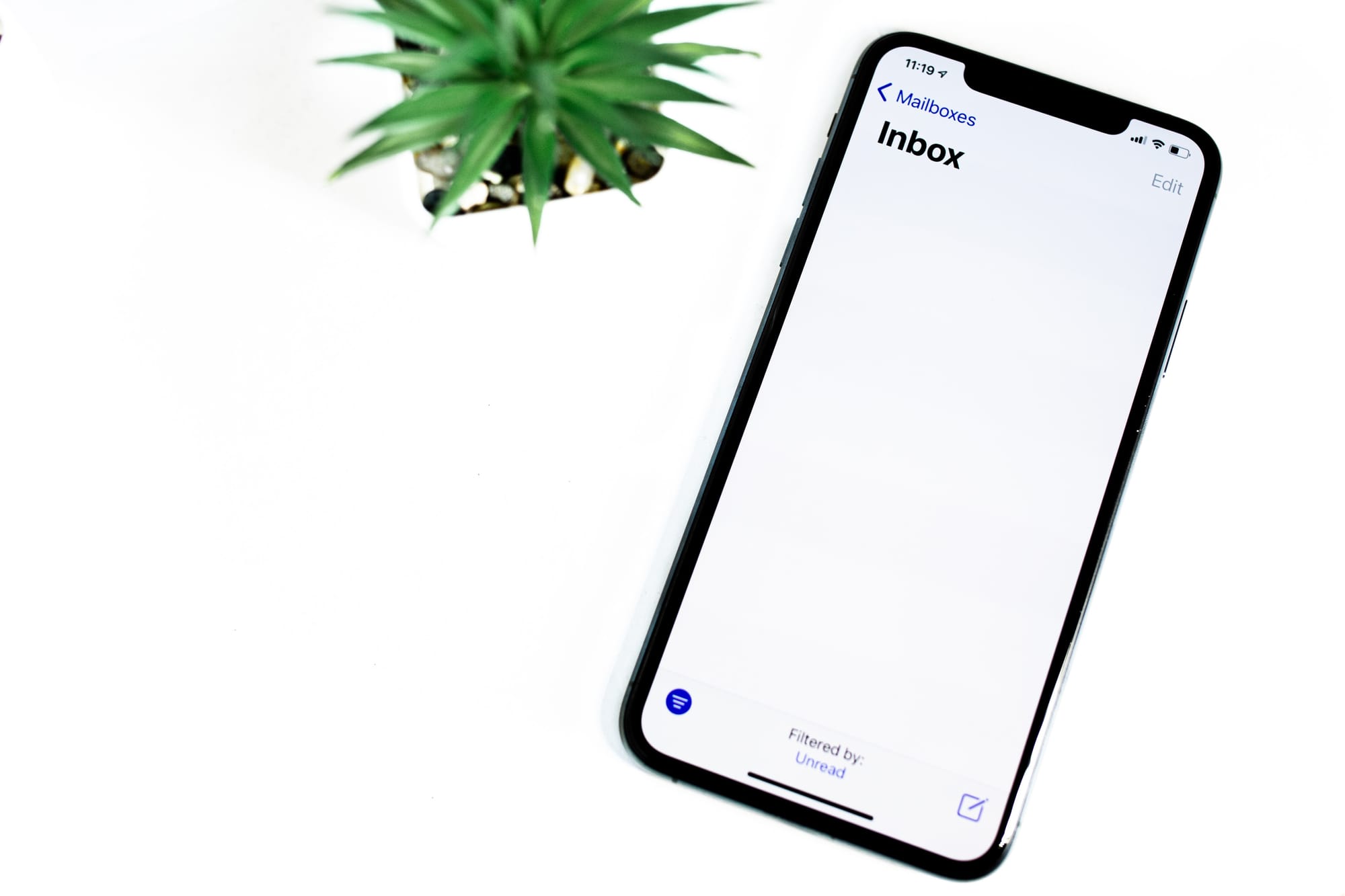
Email newsletters are a powerful tool for businesses to connect with their audience, build relationships, and drive engagement. To create an effective email newsletter, it is crucial to have a well-thought-out content plan in place. We will explore the key elements of a successful content creation strategy for an email newsletter.
1. Define Your Objectives and Target Audience
Before diving into content creation, it is essential to define your objectives and understand your target audience. Ask yourself, what do you want to achieve with your newsletter? Is it to increase brand awareness, generate leads, or drive sales? Understanding your goals will help shape your content strategy. Identify your target audience – their demographics, interests, pain points, and preferred content formats. This information will guide your decisions on what content to create and how to tailor it to resonate with your audience.
2. Establish a Content Calendar
Consistency is key when it comes to email newsletters. Establishing a content calendar will help you plan and organize your content in advance, ensuring a steady flow of newsletters. Start by determining the frequency of your newsletters – weekly, bi-weekly, or monthly. Then, create a content calendar that outlines the topics, key messages, and any relevant dates or events that align with your objectives and resonate with your audience.
3. Craft Engaging Subject Lines
The subject line is the first impression your subscribers will have of your newsletter. A compelling subject line increases open rates and encourages subscribers to engage with your content. To create enticing subject lines, consider incorporating power words, curiosity, personalization, and urgency. A/B testing can also be used to determine which subject lines resonate best with your audience.
4. Develop Engaging Content
To keep your subscribers engaged and eager to open your newsletters, it is crucial to create valuable and engaging content. Here are some content ideas to consider:
a. Educational Content
Provide your subscribers with valuable information, tips, industry insights, and how-to guides. Position yourself in your field and establish trust with your audience.
b. Curated Content
Share relevant and interesting articles, blog posts, videos, or infographics from other reputable sources. Curated content adds variety and positions your newsletter as a valuable resource.
c. Exclusive Content
Offer your subscribers exclusive content such as discounts, promotions, early access to new products or services, or behind-the-scenes insights. This creates a sense of exclusivity and encourages loyalty.
d. Interactive Content
Increase engagement by incorporating interactive elements such as polls, surveys, quizzes, or contests. This not only keeps your subscribers entertained but also provides valuable insights into their preferences and opinions.
e. User-generated Content
Encourage your subscribers to share their experiences, testimonials, or success stories related to your products or services. User-generated content adds authenticity and builds a sense of community.
5. Optimize for Mobile Devices
With the majority of emails being opened on mobile devices, it is essential to optimize your email newsletters for a seamless mobile experience. Use responsive design to ensure your emails adapt to different screen sizes. Keep your content concise, use clear and legible fonts, and include a compelling call-to-action that is easily clickable on mobile devices.
6. Personalize Your Content
Personalization is a key element of a successful email newsletter. Tailoring your content to your subscribers' preferences, interests, and behaviors can significantly increase engagement and conversion rates. Utilize subscriber data such as past purchases, browsing history, or survey responses to deliver personalized recommendations, product suggestions, or exclusive offers.
7. Monitor and Analyze Performance
Regularly monitoring and analyzing the performance of your email newsletters is crucial to refining your content strategy and achieving better results. Use email marketing analytics tools to track metrics such as open rates, click-through rates, conversion rates, and unsubscribe rates. Analyze the data to identify trends, understand what content resonates best with your audience, and make data-driven decisions to optimize future newsletters.
Creating a successful content plan for an email newsletter requires a thorough understanding of your objectives, target audience, and a strategic approach to content creation. By following the key elements outlined in this section – defining objectives, establishing a content calendar, crafting engaging subject lines, developing valuable content, optimizing for mobile devices, personalizing your content, and monitoring performance – you can create an email newsletter that captivates your audience, builds loyalty, and drives meaningful results for your business.
Related Reading
- Ugc Content Creation
- Content Marketing Content Creation
- Content Creation Seo
- Content Marketing E Commerce
- Content Creation Workflow
- Ai Social Media Content Creation
- Content Creation Tips
- B2b Content Creation
- Content Creation For Instagram
- Ai Video Content Creation
- How To Use Chatgpt For Content Creation
- Content Creation Ideas For Youtube
- Content Creation Ideas For Tiktok
- Content Creation Ideas For Instagram
Content Creation Tools
1. Leap: Automate Your Work with AI Workflows

Leap is a powerful content creation tool that harnesses the power of AI to automate your work. With partnerships with Zapier, Vercel, and more, Leap allows you to create custom AI automations that supercharge your existing tools. Whether you need AI text, image, or audio models, Leap has got you covered.
Seamless AI Integration
One of the key features of Leap is its seamless integrations with top AI platforms like OpenAI. This means that you can easily connect your favorite tools and leverage the best-in-class AI capabilities to enhance your content creation process. From document summarization to voice translation, AI call transcription to AI avatar and asset generation, Leap Workflows can automate a wide range of tasks.
Endless Automation Possibilities
With Leap, you can automate anything with its intuitive no-code interface. The opportunities for automation are endless, allowing you to save time and effort while producing high-quality content. Try Leap's AI Workflows tool for free today and experience the power of AI in your content creation process.
2. HubSpot: All-in-One Solution for Marketing, Sales, and Customer Service

HubSpot is a comprehensive business solution that offers a wide range of tools for marketing, sales, and customer service. One of its standout features is ChatSpot, a conversational AI tool that allows you to chat with your CRM.
Enhance Customer Interactions
With ChatSpot, you can have engaging conversations with your customers, automate tasks, and gain valuable insights. This AI-powered tool enables you to provide personalized and efficient customer support, boost sales, and enhance your overall marketing efforts.
Seamless Workflow Integration
ChatSpot integrates seamlessly with HubSpot's other tools, allowing you to streamline your workflows and deliver a seamless customer experience. Whether you're looking to improve your lead generation, nurture customer relationships, or drive conversions, HubSpot has got you covered.
3. Canva: Unlock Your Creativity with AI Content Creation
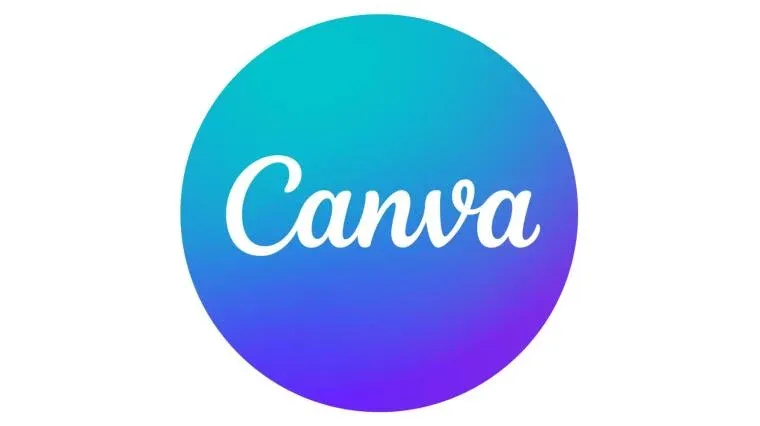
Canva is a popular online graphic design tool that empowers users to create visually stunning content. From social media posts to presentations, posters to videos, Canva offers a wide range of templates and features to help you bring your ideas to life.
Effortless Design
One of the standout features of Canva is its AI content creation capabilities. With AI-powered tools, Canva makes it easy to create professional-looking designs even if you have no design experience. It offers features like automatic image resizing, background remover, and design suggestions based on your content.
Design Pro with Ease
Canva's AI content creation tools take the guesswork out of design and help you create visually appealing content effortlessly. With Canva, anyone can become a design pro and produce eye-catching visuals for their content.
4. Midjourney: Unlock Your Imagination with AI Art Generation
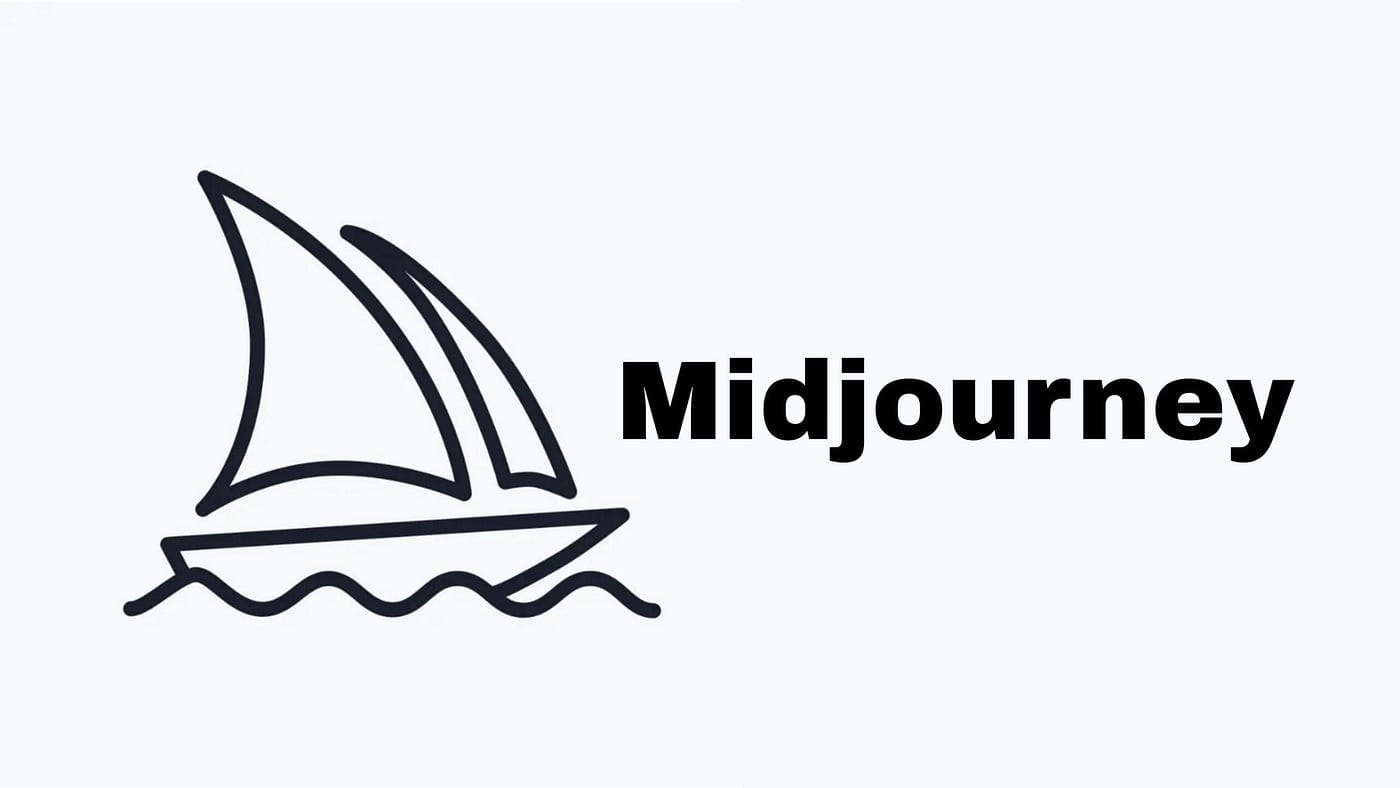
Midjourney is an independent research lab that explores new mediums of thought and expands the imaginative powers of the human species. One of its offerings is AI art generation, which allows users to create stunning art using artificial intelligence.
Whether you're a beginner or an experienced artist, Midjourney provides tutorials on platforms like YouTube to help you get started. With consistent style improvements, Midjourney's AI art generation offers endless possibilities for creative expression.
Explore the world of AI-generated art and let your imagination run wild with Midjourney. Discover new ways to create and experience art with the help of cutting-edge technology.
5. Musicfy: AI-Powered Music Creation and Voice Generation
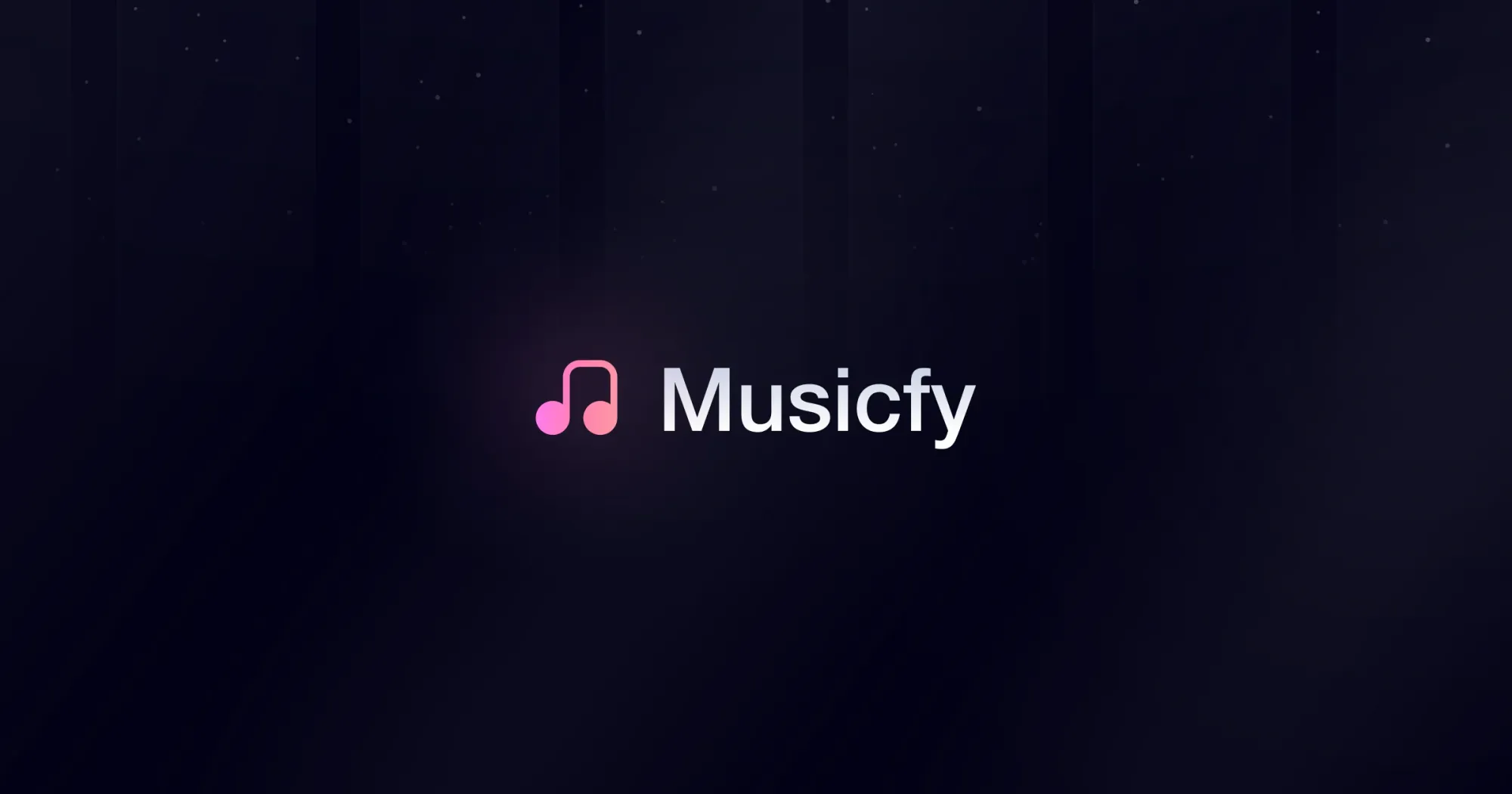
Musicfy is a revolutionary AI music generator that empowers users to create their own voice clone and AI-generated music. With Musicfy, you can create original music with AI voices, ensuring that your songs are free from copyright restrictions and royalties.
Artistic Guidance
One of Musicfy's most groundbreaking features is text-to-music. Simply describe the style of music and instrumentals you want, and Musicfy's AI will create an entire song in seconds. From the voice to the beat, Musicfy can generate all the elements that make up a song.
Imagination Unleashed
Musicfy allows you to create the sound of an instrument with your own voice. Whether it's the sound of a guitar or any other instrument, Musicfy's AI can create the exact sound for you in seconds.
Experience the future of music creation with Musicfy's AI voice generator. Try Musicfy for free today and unleash your creativity.
6. ContentShake: Streamline SEO Content Creation with AI
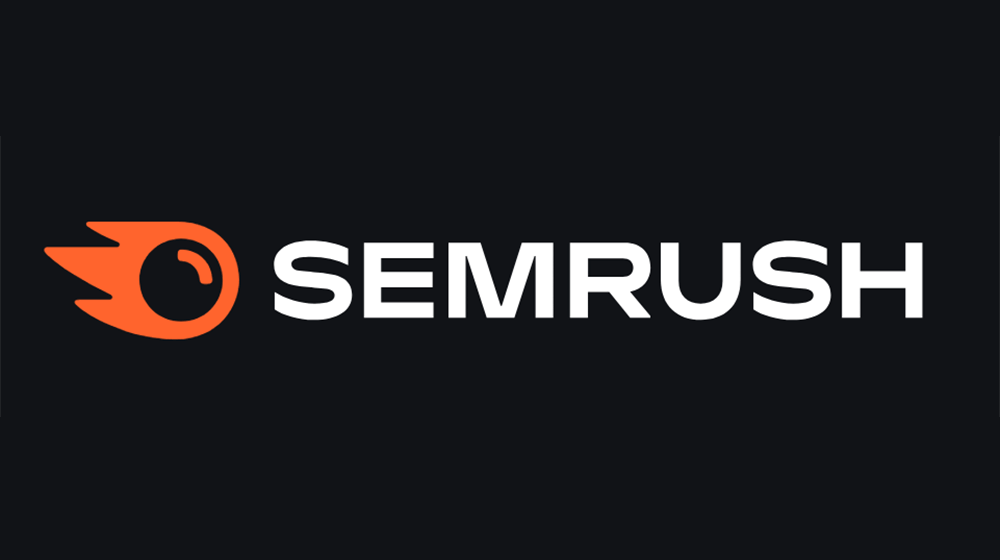
ContentShake is an all-in-one SEO content writing tool by Semrush that streamlines the content creation process. Designed to optimize SEO efforts, ContentShake leverages AI to automate and enhance the production of high-quality content.
Efficient Content Planning
With ContentShake, you can generate content briefs, perform keyword research, and analyze content performance. It offers features like AI-generated content outlines, topic suggestions, and readability analysis to ensure that your content resonates with your target audience.
SEO Mastery
By automating repetitive tasks and providing valuable insights, ContentShake allows you to create SEO-optimized content more efficiently. Boost your organic search rankings and drive traffic to your website with ContentShake's AI-powered content creation capabilities.
7. ChatGPT: Engaging Conversations and AI Content Creation

ChatGPT by OpenAI is a free-to-use AI system designed for engaging conversations, gaining insights, automating tasks, and showcasing the future of AI. It can be an invaluable tool for various content creation tasks, such as generating SEO metas, coming up with social media content ideas, and more.
Conversational Creativity
With ChatGPT, you can have interactive conversations with AI, leveraging its language capabilities to create compelling content. Ask questions, seek inspiration, and get creative suggestions to fuel your content creation process.
As AI continues to evolve, ChatGPT offers a glimpse into the potential of AI-powered content creation. Explore the possibilities and unleash your creativity with ChatGPT.
8. Descript: Simplify Video and Podcast Editing with AI

Descript is an all-in-one video and podcast editing tool that simplifies the editing process with its document-like interface. It uses AI to transcribe your audio and allows you to edit text-based timelines, making editing as easy as editing a document.
Effortless Editing
With Descript, you can edit your videos and podcasts by simply editing the text. It offers features like removing filler words, correcting mistakes, and even overdubbing. Descript's AI-powered tools save you time and effort, allowing you to focus on creating high-quality content.
Simplify your video and podcast editing workflow with Descript's intuitive AI-powered interface. Edit your content with ease and bring your vision to life.
9. Jasper: Boost Marketing Efforts with AI-Powered Content Generation

Jasper AI is an enterprise-grade AI tool designed to assist marketing teams in achieving speed and performance. As a large language model, Jasper is particularly useful for content generation, copywriting, and other marketing-related tasks.
Effortless Content Creation
With Jasper, you can generate high-quality content quickly and efficiently. Whether you need blog posts, social media captions, or email copy Jasper's AI capabilities provide valuable assistance. It offers suggestions, improves drafts, and helps create engaging and persuasive content.
Take your marketing efforts to the next level with Jasper's AI-powered content generation. Utilize the power of AI to create impactful and persuasive content that resonates with your audience.
10. Synthesia: Professional Video Creation Made Easy with AI

Synthesia is a leading AI Video Creation Platform that allows users to produce professional videos without the need for expensive equipment or extensive production processes. With Synthesia, you can create videos using AI-generated avatars and voiceovers.
Transforming Text to Video
Whether you need to create explainer videos, training materials, or marketing campaigns, Synthesia offers a wide range of customizable templates and AI-powered features. Simply input your text, select an avatar, and let Synthesia's AI bring your video to life.
With Synthesia, you can save time and resources while producing high-quality videos that captivate your audience. Embrace the power of AI in video creation and unlock your creative potential.
11. Mailsplash: Create Stunning Email Campaigns with AI
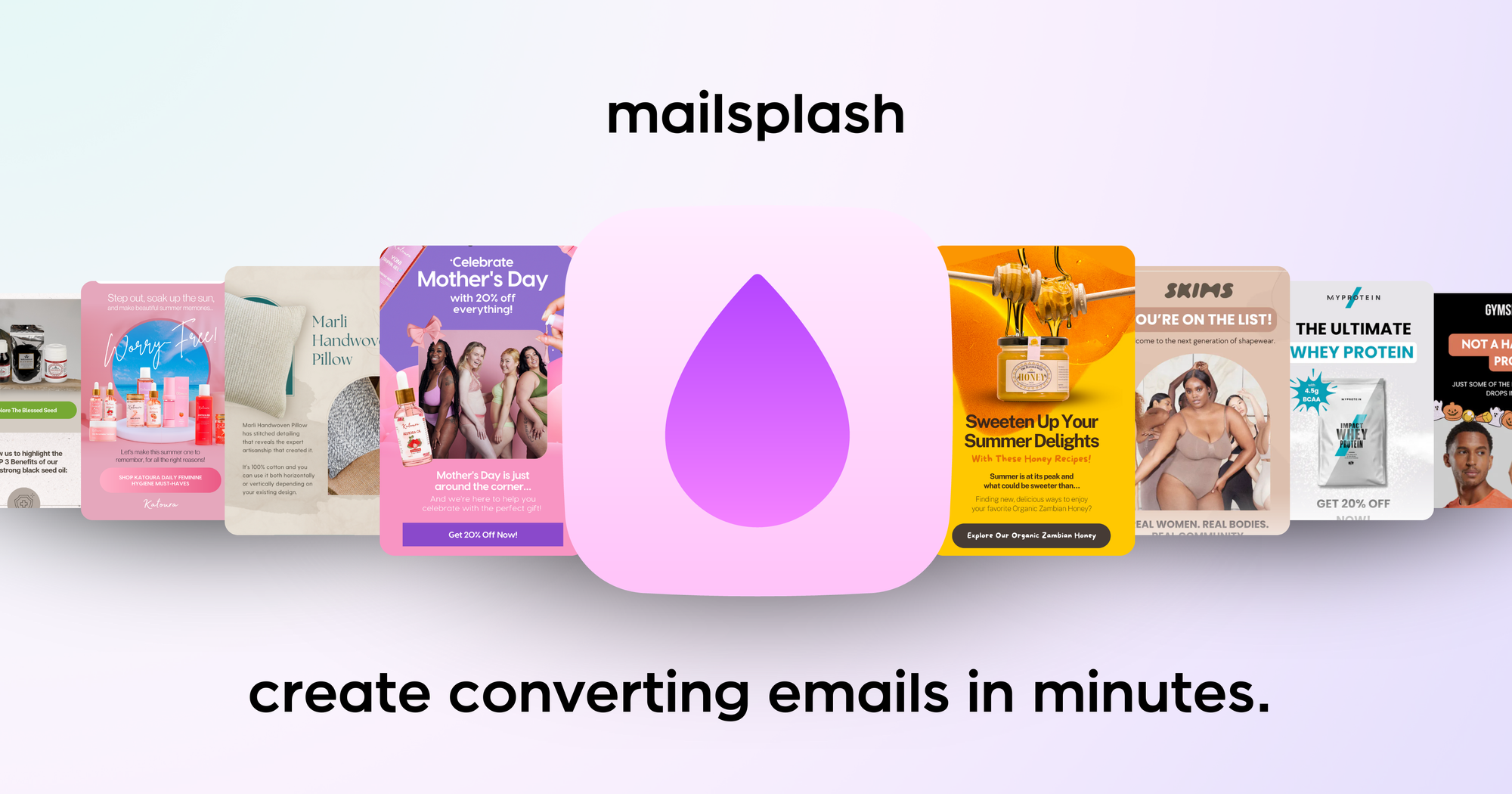
Mailsplash is an AI-powered tool that enables you to create visually stunning and converting email templates. It offers an all-in-one email solution for freelancers, brands, and agencies, allowing you to rapidly create personalized email campaigns at a lower cost than traditional marketing agencies.
With Mailsplash, you can design and create email campaigns and flows in minutes. It seamlessly integrates with popular email service providers like Mailchimp and Klaviyo, making it easy to send your emails.
From email copywriting to personalized branded email template design, Mailsplash streamlines the email marketing process and helps you achieve better results. Try Mailsplash's all-in-one email solution for free today and take your email marketing to new heights.
Content Creation

Social Media
One of the most effective ways for businesses to maximize the value of their existing content on social media is to repurpose and recycle it. By doing so, they can reach a wider audience, increase engagement, and save time and resources. Here are some strategies businesses can use to repurpose and recycle their content:
1. Convert Blog Posts into Visual Content
Businesses can transform their blog posts into eye-catching visual content such as infographics, slideshows, or videos. This not only makes the content more shareable but also appeals to different types of learners.
2. Create Snippets for Social Media Posts
Instead of sharing an entire blog post or article on social media, businesses can create bite-sized snippets or key takeaways. This not only entices followers to click on the link to read the full content but also allows them to consume the information quickly.
3. Turn Data into Visuals
Businesses can repurpose data from research or surveys into visually appealing charts, graphs, or illustrations. This not only makes the content more engaging but also helps in conveying complex information in a concise manner.
4. Create Quote Cards
Identify compelling quotes or statistics from existing content and design visually appealing quote cards. These can be shared on social media platforms to grab attention and spark conversations.
5. Update and Republish Evergreen Content
Businesses can revisit their evergreen content (content that remains relevant over time) and update it with new information or insights. By republishing the updated content, they can reach new audiences and remind existing followers of valuable information.
Leveraging User-Generated Content on Social Media
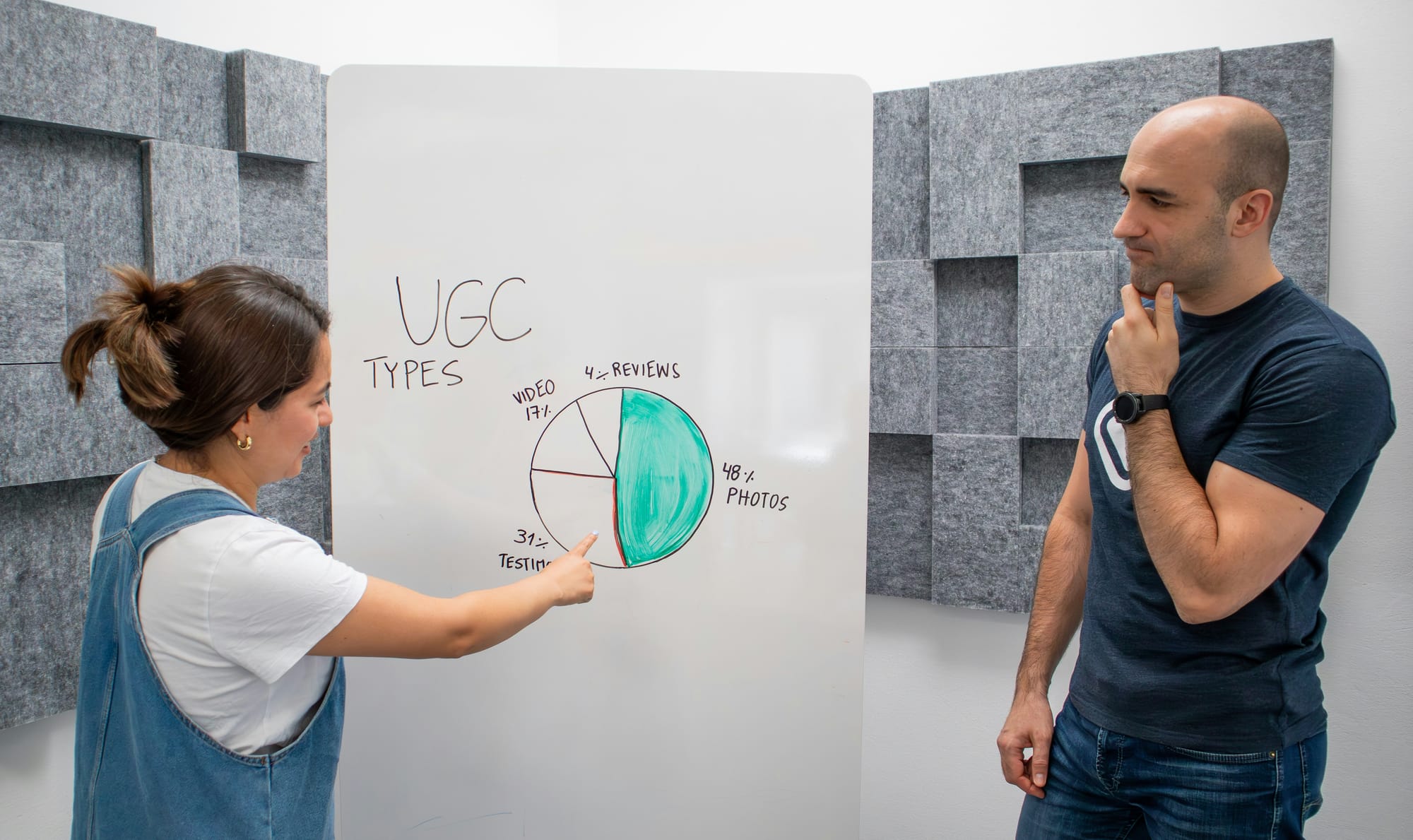
User-generated content (UGC) is a powerful tool that businesses can leverage to enhance their content creation strategy on social media. UGC not only helps in building brand credibility and trust but also encourages audience engagement and participation. Here's how businesses can effectively incorporate UGC into their social media content:
1. Encourage Customer Reviews and Testimonials
Request customers to share their experiences through reviews or testimonials, and showcase them on social media platforms. This not only adds a personal touch but also provides social proof, influencing potential customers' purchasing decisions.
2. Run Contests and Campaigns
Businesses can organize contests or campaigns that encourage customers to create and share content related to their brand. This could be in the form of photos, videos, or stories. By offering incentives or rewards, businesses can generate a buzz and increase UGC.
3. Curate and Share User-Generated Content
Monitor social media platforms for content created by customers that aligns with the brand's values and aesthetics. With proper attribution, share this UGC on social media to showcase the brand's community and foster a sense of belonging.
4. Engage with User-Generated Content
Respond to and engage with UGC by liking, commenting, and sharing it. This not only shows appreciation for customers' efforts but also encourages others to create and share content.
5. Collaborate with Influencers or Brand Ambassadors
Collaborate with influencers or brand ambassadors who align with the brand's values and target audience. Encourage them to create content or reviews and share it on their social media platforms, thus amplifying the reach of UGC.
Creating Content for Social Media
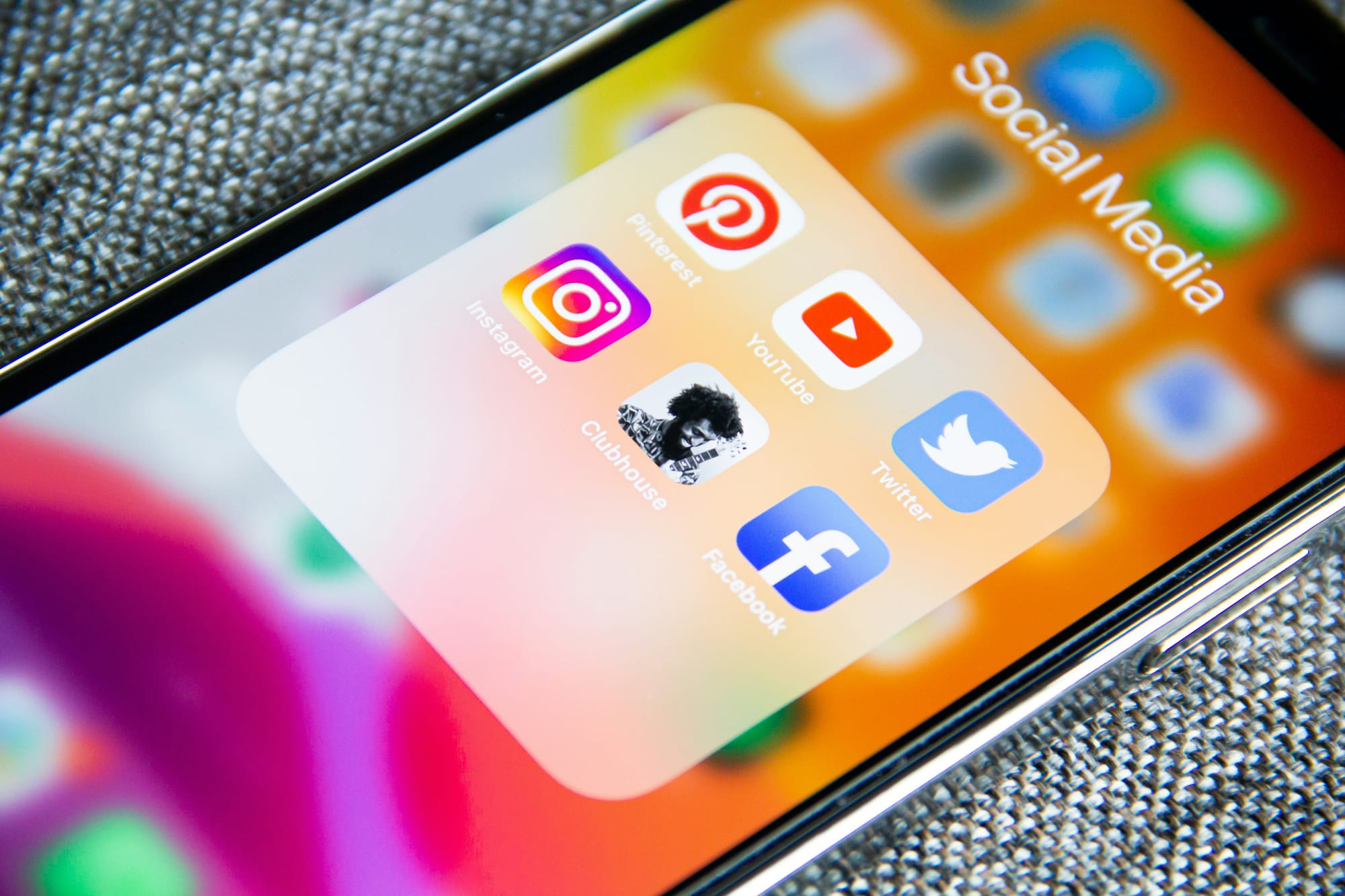
Having a well-planned content creation strategy is crucial for businesses to succeed on social media. Here is a step-by-step guide on creating content for social media, after developing a content plan:
1. Define Objectives and Target Audience
Clearly define the objectives of the content and identify the target audience. This will help in tailoring the content to meet specific goals and resonate with the intended audience.
2. Choose the Right Format
Select the appropriate format for the content based on the objectives, target audience, and platform. This could include text-based posts, images, videos, live streams, or a combination of formats.
3. Craft Engaging Headlines and Captions
Write compelling headlines and captions that grab attention and entice users to engage with the content. Use keywords strategically to optimize visibility and reach.
4. Use High-Quality Visuals
Ensure that the visuals used in the content are high-quality, visually appealing, and relevant to the message being conveyed. This helps in capturing attention and conveying the brand's identity.
5. Incorporate Relevant Hashtags
Research and include relevant hashtags in the content to increase discoverability and reach. Use a mix of popular and niche hashtags to attract the right audience.
6. Optimize for Each Platform
Adapt the content to suit the unique characteristics of each social media platform. This includes considering the ideal posting times, character limits, and features specific to each platform.
7. Encourage Engagement
Include clear calls-to-action in the content to encourage user engagement. This could be in the form of asking questions, requesting feedback, or urging users to share their experiences.
8. Monitor and Analyze Performance
Regularly monitor the performance of the content using social media analytics tools. Analyze metrics such as reach, engagement, and conversions to understand what works best and make informed decisions for future content creation.
Empower Your Workflow
Leap helps you to automate your work with the power of AI. Partnered with Zapier, Vercel, and more, Leap enables you to supercharge your work by allowing you to create custom AI automations. Create sophisticated AI automations with no-code. Connect the tools you love with best-in-class AI text, image, and audio models.
Supercharge your existing tools with seamless AI integrations to OpenAI, Microsoft, and more. From summarizing documents, to voice translation, to AI call transcription, to AI avatar and asset generation, to SEO automation, automate anything with Leap Workflows. The opportunities for automation are endless with Leap workflows. Try Leap’s AI Workflows tool for free today.
Website/Blog

One of the most effective strategies for businesses to maximize the value of their website or blog is to repurpose and recycle existing content. By repackaging and presenting content in different formats, businesses can reach a wider audience and extend the lifespan of their valuable content. Here are some ways businesses can repurpose and recycle their existing content:
1. Create Infographics
Transforming text-based content into visually appealing infographics can be a great way to attract and engage users. Infographics are highly shareable and can effectively convey complex information in a concise and visually appealing manner.
2. Convert Blog Posts into Videos
Turn your blog posts into engaging videos to cater to users who prefer visual content. You can use tools like Lumen5 or Adobe Spark to create dynamic video content by repurposing the main points and key information from your blog posts.
3. Develop Podcast Episodes
Convert your written content into audio format by creating podcast episodes. This allows users to consume your content on-the-go and appeals to those who prefer audio-based content. You can use platforms like Anchor or Buzzsprout to easily record and distribute your podcast episodes.
4. Design E-books or Whitepapers
Compile your existing blog posts or articles into comprehensive e-books or whitepapers. This allows you to provide in-depth information on specific topics, establish thought leadership, and capture leads by offering them as gated content in exchange for contact information.
Leveraging User-Generated Content to Enhance Content Creation Strategy
User-generated content (UGC) is a powerful tool that businesses can leverage to enhance their content creation strategy. UGC not only helps in generating fresh and authentic content but also fosters a sense of community and engagement. Here's how businesses can effectively use UGC to enhance their content creation strategy:
1. Encourage Reviews and Testimonials
Encourage customers to provide reviews and testimonials about their experiences with your products or services. These reviews can be featured on your website or blog, providing social proof and building trust among potential customers.
2. Run Contests and Campaigns
Organize contests or campaigns that encourage users to create and share their own content related to your brand or products. This can include user-generated photos, videos, or written testimonials. Not only does this generate fresh content, but it also creates buzz and engagement around your brand.
3. Curate User-Generated Content
Share and showcase user-generated content on your website or blog. This can include featuring customer stories, testimonials, or reviews. By curating and highlighting UGC, you not only provide valuable content but also show appreciation for your customers, fostering a sense of loyalty and community.
4. Collaborate with Influencers
Collaborate with influencers or industry experts to create content that incorporates user-generated content. This can include interviews, guest blog posts, or social media takeovers. By involving influencers and users in your content creation process, you can expand your reach and credibility.
Creating Content for a Website/Blog: A Complete Guide
Creating content for a website or blog involves more than just writing a few paragraphs. It requires careful planning, research, and execution. Here's a complete guide for businesses on creating content for their website or blog:
1. Define Your Target Audience
Before creating any content, it's important to clearly define your target audience. Understand their demographics, interests, pain points, and preferences. This will help you tailor your content to their needs and interests.
2. Conduct Keyword Research
Research relevant keywords and phrases that your target audience is likely to search for. Use tools like Google Keyword Planner or SEMrush to identify high-volume and low-competition keywords that can drive organic traffic to your website.
3. Develop a Content Plan
Create a content plan that outlines the topics, formats, and publishing schedule for your content. This will help you stay organized and consistent in your content creation efforts.
4. Craft Compelling Headlines
Write attention-grabbing headlines that entice users to click and read your content. Incorporate keywords and use power words to evoke emotion and curiosity.
5. Create Engaging and Valuable Content
Focus on creating high-quality content that provides value to your audience. Use a mix of text, visuals, and multimedia elements to make your content more engaging and informative.
6. Optimize for SEO
Incorporate relevant keywords naturally throughout your content to improve its visibility in search engine rankings. Also, optimize meta tags, headings, and URLs for better SEO performance.
7. Incorporate Visuals
Enhance your content with visually appealing elements such as images, videos, or infographics. Visuals not only make your content more attractive but also help in conveying information more effectively.
8. Encourage Social Sharing
Include social sharing buttons on your website or blog to make it easy for users to share your content on social media. This can help in increasing your content's reach and visibility.
9. Monitor and Analyze Performance
Regularly monitor the performance of your content using analytics tools like Google Analytics. Analyze metrics such as page views, engagement, and conversion rates to understand what works and what needs improvement.
10. Update and Repurpose Existing Content
Continuously update and repurpose your existing content to keep it fresh and relevant. This can involve adding new information, improving visuals, or repackaging content in different formats.
Try Leap's AI Workflows Tool for Free Today
Leap helps you to automate your work with the power of AI. Partnered with Zapier, Vercel, and more, Leap enables you to supercharge your work by allowing you to create custom AI automations. Create sophisticated AI automations with no-code. Connect the tools you love with best-in-class AI text, image, and audio models.
Supercharge your existing tools with seamless AI integrations to OpenAI, Microsoft, and more. From summarizing documents, to voice translation, to AI call transcription, to AI avatar and asset generation, to SEO automation, automate anything with Leap Workflows. The opportunities for automation are endless with Leap workflows. Try Leap's AI Workflows tool for free today.
Email Newsletter

Repurposing and recycling existing content is a great way for businesses to maximize the value of their email newsletter. By finding new ways to present and package content that has already been created, businesses can save time and effort while still providing valuable information to their subscribers. Here are some strategies for repurposing and recycling existing content for your email newsletter:
1. Create Roundup or Best-of Emails
A roundup or best-of email can be a compilation of your top-performing blog posts, articles, or videos from a specific period. This allows you to showcase your best content to subscribers who may have missed it the first time around. It also helps to highlight the expertise and authority of your business in your industry.
2. Turn Blog Posts into Newsletters
If you have a blog, you can repurpose your blog posts into email newsletters. Take the key points, main takeaways, or even summarize the entire blog post in a concise and engaging format. This not only saves you time but also gives your subscribers a convenient way to consume your content.
3. Transform Videos into Text-based Content
If you have recorded videos, consider transcribing them and turning them into text-based content for your newsletter. This allows subscribers who prefer reading over watching videos to access the information. You can also include snippets or key points from the video along with the transcript to provide a teaser and entice subscribers to watch the full video if they are interested.
4. Leverage Infographics and Visuals
If you have created infographics or other visual content, consider repurposing them for your email newsletter. You can break down an infographic into smaller sections and use them as separate visuals in your newsletter. This not only adds visual appeal but also provides bite-sized information that is easier to digest for your subscribers.
Leveraging User-Generated Content to Enhance Your Email Newsletter
User-generated content (UGC) refers to any content created by your audience or customers. By leveraging UGC in your email newsletter, you can enhance your content creation strategy and strengthen the connection with your subscribers. Here are some ways to leverage UGC in your email newsletter:
1. Testimonials and Reviews
Collect testimonials and reviews from your customers and feature them in your email newsletter. This not only adds social proof but also shows potential customers the positive experiences others have had with your products or services.
2. User Stories and Case Studies
Share success stories or case studies from your customers in your email newsletter. Highlight how your products or services have helped them achieve their goals or solve their problems. This not only provides valuable insights but also showcases the real-world impact of your offerings.
3. Social Media Highlights
Incorporate UGC from your social media platforms into your email newsletter. This can include posts, comments, or images that your audience has shared about your brand. By featuring user-generated content, you not only engage your subscribers but also encourage them to participate and share their own content.
4. Contests and Challenges
Run contests or challenges that encourage your audience to create and submit their own content. This can be in the form of photos, videos, or written testimonials. Feature the best submissions in your email newsletter and reward the winners. This not only generates UGC but also creates a sense of community and involvement among your subscribers.
A Complete Guide to Creating Content for Your Email Newsletter

Now that you have created your content plan for your email newsletter, it's time to dive into the process of actually creating the content. Here is a complete guide to help you create compelling and effective content for your email newsletter:
1. Define Your Goals
Before creating any content, clearly define the goals you want to achieve with your email newsletter. Whether it's driving sales, increasing brand awareness, or educating your audience, having clear goals will guide your content creation process.
2. Understand Your Audience
Know your audience inside and out. Conduct research to understand their needs, preferences, and pain points. This will help you create content that resonates with them and provides value.
3. Plan Your Content Calendar
Create a content calendar that outlines the topics, themes, and timing of your email newsletters. This will help you stay organized and ensure a consistent flow of content to your subscribers.
4. Craft Attention-Grabbing Subject Lines
Your subject line is the first impression subscribers have of your email. Make it compelling, enticing, and relevant to increase open rates.
5. Focus on Quality and Value
Every piece of content you create should provide value to your subscribers. Whether it's educational, entertaining, or inspirational, ensure that your content is high-quality and aligns with your audience's interests.
6. Use Engaging Visuals
Incorporate visually appealing elements such as images, videos, and infographics in your email newsletters. Visuals can capture attention, break up text, and enhance the overall experience for your subscribers.
7. Personalize and Segment
Take advantage of the data you have on your subscribers to personalize your content. Segment your audience based on demographics, preferences, or behaviors and tailor your content to each segment's specific needs and interests.
8. Include Call-to-Actions
Every piece of content in your email newsletter should have a clear call-to-action. Whether it's directing subscribers to visit your website, make a purchase, or share your content, guide them towards the desired action.
9. Test and Optimize
Continuously test different elements of your email newsletter, such as subject lines, content formats, and call-to-actions. Analyze the results and optimize your content based on what resonates best with your audience.
10. Monitor and Measure
Track key metrics such as open rates, click-through rates, and conversions to evaluate the effectiveness of your email newsletter. Use this data to refine your content strategy and improve future campaigns.
By following this guide, businesses can create engaging and valuable content for their email newsletters. Remember to continuously analyze and adapt your content strategy based on the feedback and behaviors of your subscribers.
Best Practices for The Content Creation Process & How To Incorporate Storytelling

Creating high-quality and engaging content is essential for capturing and retaining the attention of your audience. Here are some best practices to follow:
1. Know Your Audience
To create content that resonates with your target audience, it is crucial to understand their needs, interests, and preferences. Conduct thorough research to gain insights into their demographics, psychographics, and online behaviors. This knowledge will help you tailor your content to their specific interests and address their pain points effectively.
2. Provide Value
High-quality content adds value to the lives of your audience. Whether it's informational, educational, or entertaining, your content should offer something unique and useful. Focus on providing solutions, insights, or perspectives that your audience can apply in their lives or work. This will establish your credibility and encourage them to seek out more of your content.
3. Maintain Consistency
Consistency is key to building a loyal audience. Set a regular publishing schedule and stick to it. By consistently delivering valuable content, you establish trust and reliability with your audience. Maintain a consistent tone and style that aligns with your brand and resonates with your audience's preferences.
4. Use Attention-Grabbing Headlines
Crafting compelling headlines is crucial for grabbing the attention of your audience and enticing them to click on your content. Use powerful words, evoke curiosity, and provide a clear benefit to the reader. A strong headline will make your content stand out in a sea of information and increase the likelihood of engagement.
5. Incorporate Visuals
Visual elements, such as images, videos, infographics, and illustrations, can significantly enhance the engagement and appeal of your content. Visuals help break up the text, make it more digestible, and communicate information in a more engaging way. Use high-quality visuals that are relevant to your content and reinforce your message.
6. Optimize for SEO
Search engine optimization (SEO) is crucial for ensuring your content is discoverable by search engines and ranks well in search results. Research relevant keywords and incorporate them naturally throughout your content. Optimize your meta tags, headings, and URLs to increase your content's visibility and attract organic traffic.
Incorporating Storytelling into Your Content
Storytelling is a powerful technique that can captivate and engage your audience on a deeper level. Here's how you can incorporate storytelling into your content:
1. Begin with a Compelling Hook
Start your content with a captivating opening that immediately grabs your audience's attention. This could be a personal anecdote, a relatable scenario, or a thought-provoking question. The hook should pique their curiosity and create an emotional connection, compelling them to continue reading.
2. Create a Narrative Arc
Structure your content around a narrative arc to create a sense of progression and keep your audience engaged. Begin with an introduction that sets the stage and introduces the main characters or ideas. Then, develop the story by presenting conflicts, challenges, or obstacles. Provide a resolution or conclusion that ties everything together and leaves your audience with a satisfying takeaway.
3. Use Descriptive Language
Bring your content to life by using descriptive language that engages the senses and paints a vivid picture in the minds of your audience. Use metaphors, similes, and other literary devices to create imagery and evoke emotions. This will make your content more memorable and impactful.
4. Incorporate Personal Stories
Sharing personal stories or experiences can help you establish a connection with your audience. By sharing your own challenges, successes, or lessons learned, you humanize your content and make it relatable. Personal stories also add authenticity and credibility to your content.
5. Appeal to Emotions
Emotions are powerful motivators that can influence your audience's engagement and decision-making. Use storytelling techniques to evoke emotions such as empathy, joy, curiosity, or excitement. This emotional connection will make your content more memorable and compelling.
6. Provide a Clear Message or Moral
Every story should have a clear message or moral that resonates with your audience. Whether it's a lesson learned, a call to action, or a thought-provoking insight, make sure your content leaves your audience with a clear takeaway. This will make your content more impactful and encourage them to share it with others.
By following these best practices and incorporating storytelling into your content, you can create high-quality and engaging pieces that resonate with your audience and leave a lasting impression.
How To Effectively Measure Your Content Creation Efforts

Content creation is a crucial part of any business's marketing strategy. Creating high-quality and engaging content helps businesses capture the attention of their target audience, build brand awareness, and drive customer engagement. In order to ensure that your content creation efforts are effective, it is important to measure their impact and make data-driven decisions. We will explore various methods and metrics that can help businesses measure the effectiveness of their content creation efforts.
1. Define Clear Goals and Objectives
Before diving into metrics and measurements, it is important to define clear goals and objectives for your content creation efforts. These goals should align with your overall marketing strategy and the specific purpose of each piece of content. Are you aiming to increase brand awareness, generate leads, drive website traffic, or boost customer engagement? By establishing clear goals, you can focus your measurement efforts on the metrics that matter most to your business.
2. Track Key Performance Indicators (KPIs)
Key Performance Indicators (KPIs) are essential metrics that help businesses assess the success of their content creation efforts. The choice of KPIs may vary depending on your goals, but some common KPIs for content creation include:
Website Traffic
Measure the number of visitors to your website through tools like Google Analytics. This metric helps gauge the effectiveness of your content in attracting and engaging users.
Engagement Metrics
Assess the level of engagement your content generates, such as time on page, bounce rate, and social media shares. These metrics indicate whether your content is resonating with your audience.
Conversions
Measure how your content contributes to lead generation and conversions. Track the number of form submissions, downloads, or purchases that can be directly attributed to your content.
Brand Mentions and Sentiment
Monitor online conversations and social media mentions to gauge the impact of your content on brand perception and customer sentiment.
3. Analyze Audience Insights
Understanding your target audience is essential for creating effective content. By analyzing audience insights, you can gain valuable feedback and make data-driven decisions. Some methods to gather audience insights include:
Surveys and Feedback
Conduct surveys or collect feedback from your audience to understand their preferences, interests, and needs. This information can help you tailor your content to better meet their expectations.
Social Media Listening
Monitor social media platforms for conversations and trends related to your industry or brand. Identify the topics that resonate with your audience and use this knowledge to create relevant and engaging content.
Website Analytics
Utilize website analytics tools to gather demographic information, user behavior, and interests of your website visitors. This data can guide your content creation strategy and help you target the right audience.
4. A/B Testing

A/B testing involves creating two variations of a piece of content and comparing their performance to determine the most effective version. This method allows you to test different elements such as headlines, visuals, call-to-action buttons, or content formats. By measuring the performance of each variation, you can determine which elements resonate best with your audience and optimize your content accordingly.
5. Monitor SEO Performance
Search Engine Optimization (SEO) plays a crucial role in content creation. Monitoring your content's SEO performance can provide insights into its visibility and impact. Key metrics to track include:
Keyword Rankings
Monitor the ranking of your content for target keywords in search engine results pages (SERPs). Higher rankings indicate that your content is reaching a wider audience.
Organic Traffic
Measure the amount of traffic driven to your website through organic search. This metric indicates the effectiveness of your SEO efforts and the visibility of your content.
Backlinks
Track the number and quality of backlinks pointing to your content. Backlinks are a strong signal of content authority and can positively impact your SEO performance.
Measuring the effectiveness of content creation efforts is crucial for businesses to optimize their strategies and drive meaningful results. By setting clear goals, tracking relevant KPIs, analyzing audience insights, conducting A/B testing, and monitoring SEO performance, businesses can gain valuable insights and make data-driven decisions to enhance their content creation efforts. Regular evaluation and optimization are key to creating high-quality, engaging content that resonates with your target audience and drives business growth.
Create Game Changing Automations Today With Leap’s AI Workflows
Staying ahead of the competition requires efficiency, innovation, and a touch of magic. That's where Leap comes in. With the power of AI, Leap empowers you to automate your work, saving you time and effort while supercharging your productivity.
Automate Your Work with AI
Leap is a game-changer when it comes to automating your tasks. By partnering with leading platforms like Zapier and Vercel, Leap allows you to create custom AI automations effortlessly – no coding skills required. With Leap, you can connect the tools you love and seamlessly integrate them with best-in-class AI models.
Seamless Integration with AI Models
Leap offers a wide range of AI models, including text, image, and audio, to cater to your specific automation needs. Summarize documents with the click of a button, translate voice recordings instantly, and transcribe AI-generated call conversations effortlessly. Leap's AI models are designed to make your life easier and more efficient.
AI Avatar and Asset Generation
Creating captivating visual content is vital in today's content-driven world. With Leap, you can generate AI avatars and assets effortlessly. Whether you need realistic human faces for your marketing campaigns or unique characters for your storytelling, Leap's AI models have got you covered. Let your creativity soar as you harness the power of AI to bring your ideas to life.
SEO Automation Made Easy
Search engine optimization (SEO) is crucial for boosting your online visibility and driving organic traffic to your website. With Leap, you can automate SEO tasks to optimize your content for search engines. From keyword research to content optimization, Leap's AI tools streamline the process, making it easier and more effective than ever before.
Endless Opportunities with Leap Workflows
Leap Workflows unlock a world of possibilities for automation. From streamlining your content creation process to enhancing customer support, the opportunities are endless. Seamlessly integrate Leap with OpenAI, Microsoft, and other leading AI platforms to create sophisticated workflows tailored to your needs. With Leap, you can automate anything and everything.
Try Leap's AI Workflows for Free Today
Are you ready to take your work to the next level? Try Leap's AI Workflows tool for free today and experience the power of automation. Boost your productivity, unleash your creativity, and revolutionize the way you work. With Leap, the future is now. Embrace the magic of AI and watch your possibilities expand.
Related Reading
- Content Creation Tools
- Content Creation Agency
- Content Creation Software
- Automated Content Creation
- Ai Tools For Content Creation
- Social Media Content Creation Services
- Social Media Content Creation Agency
- Best Content Creation Apps
- Seo Content Creation Services
- Digital Content Creation Tools
- Social Media Content Creation Tools
- Video Content Creation Agency
- B2B Content Creation Agency
- Tiktok Content Creation Agency
- Content Creation Marketing Agency



